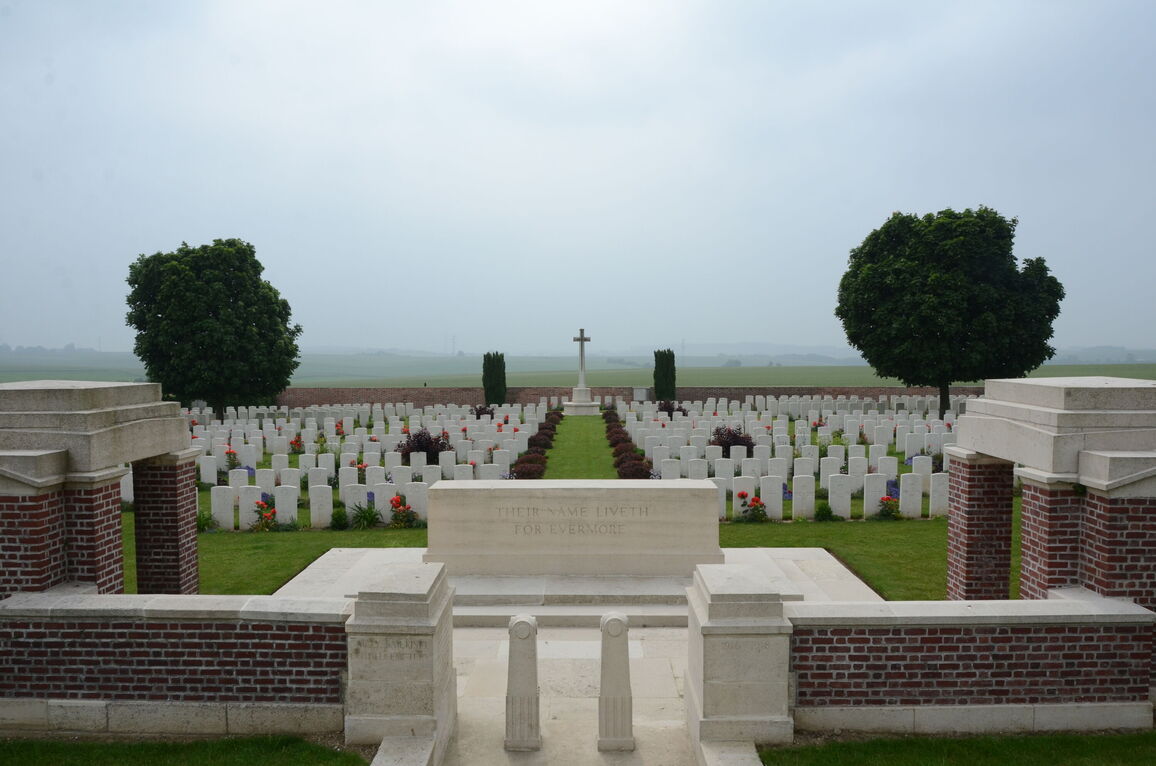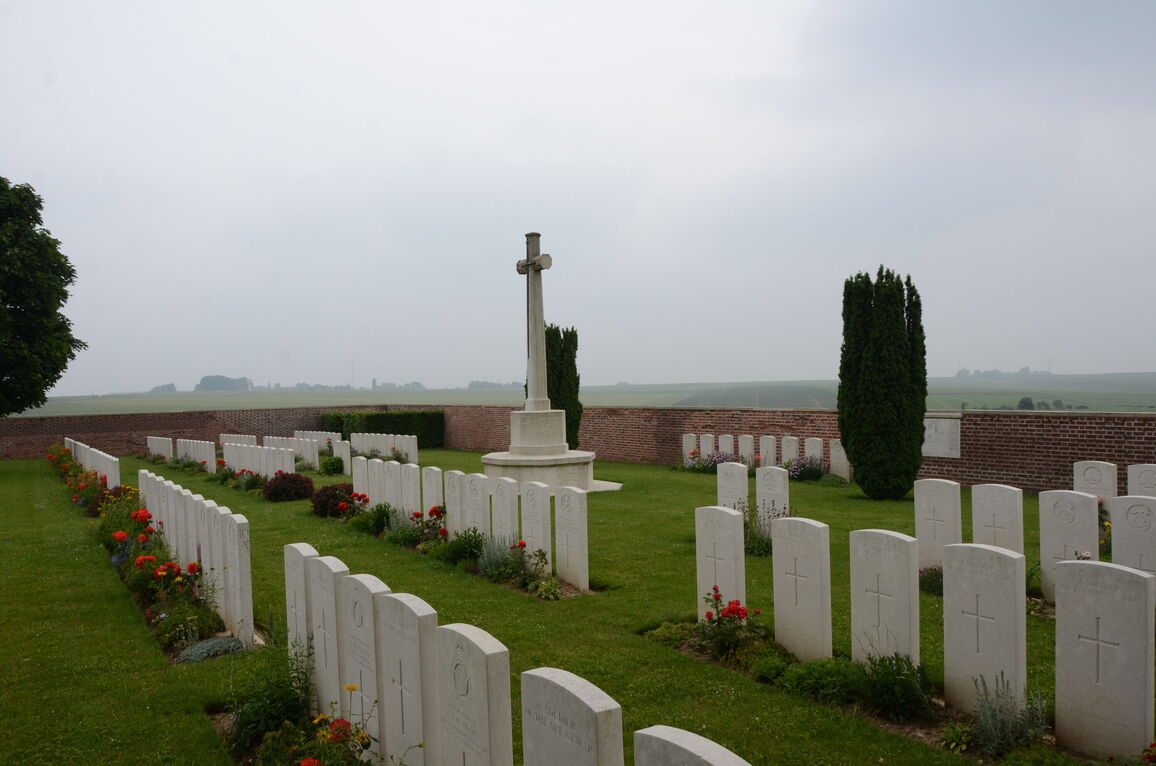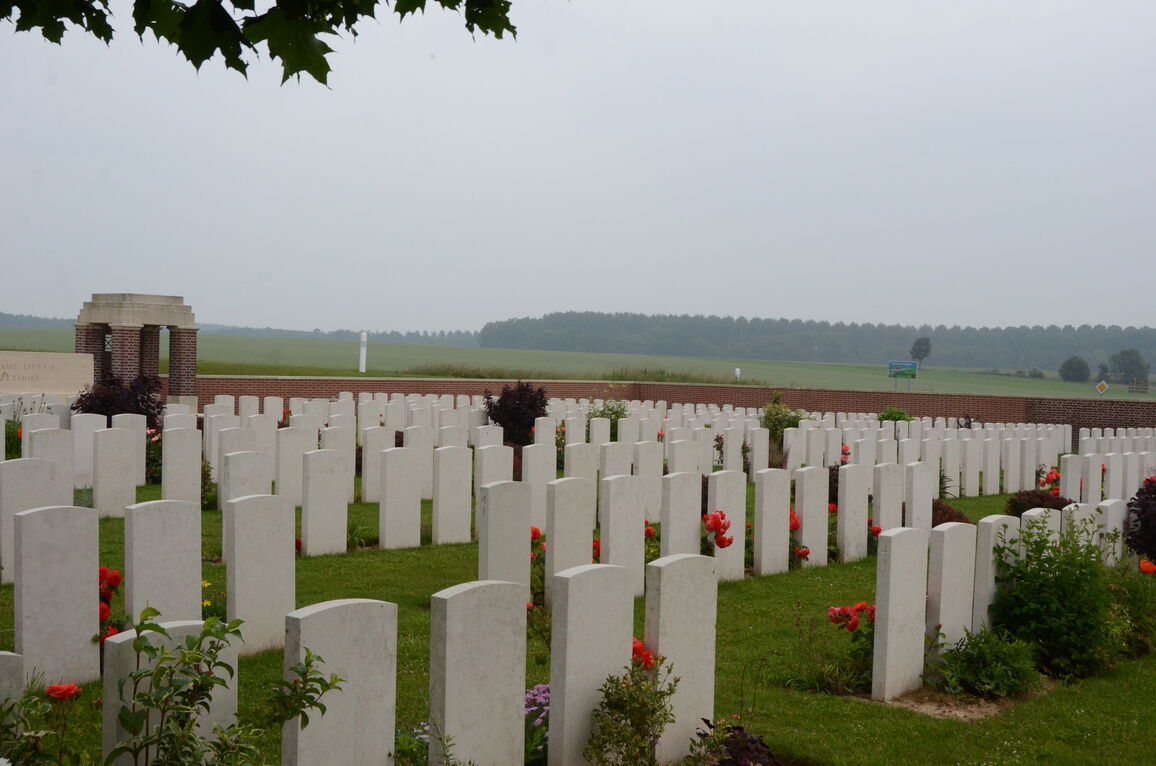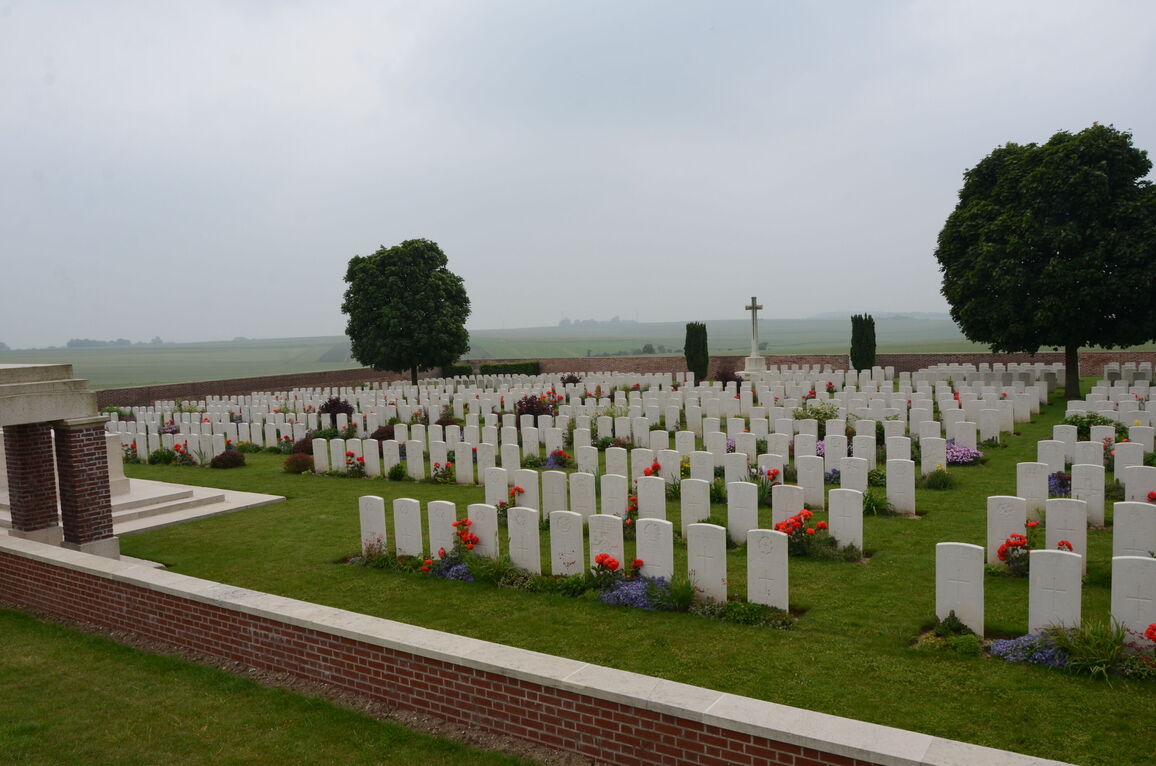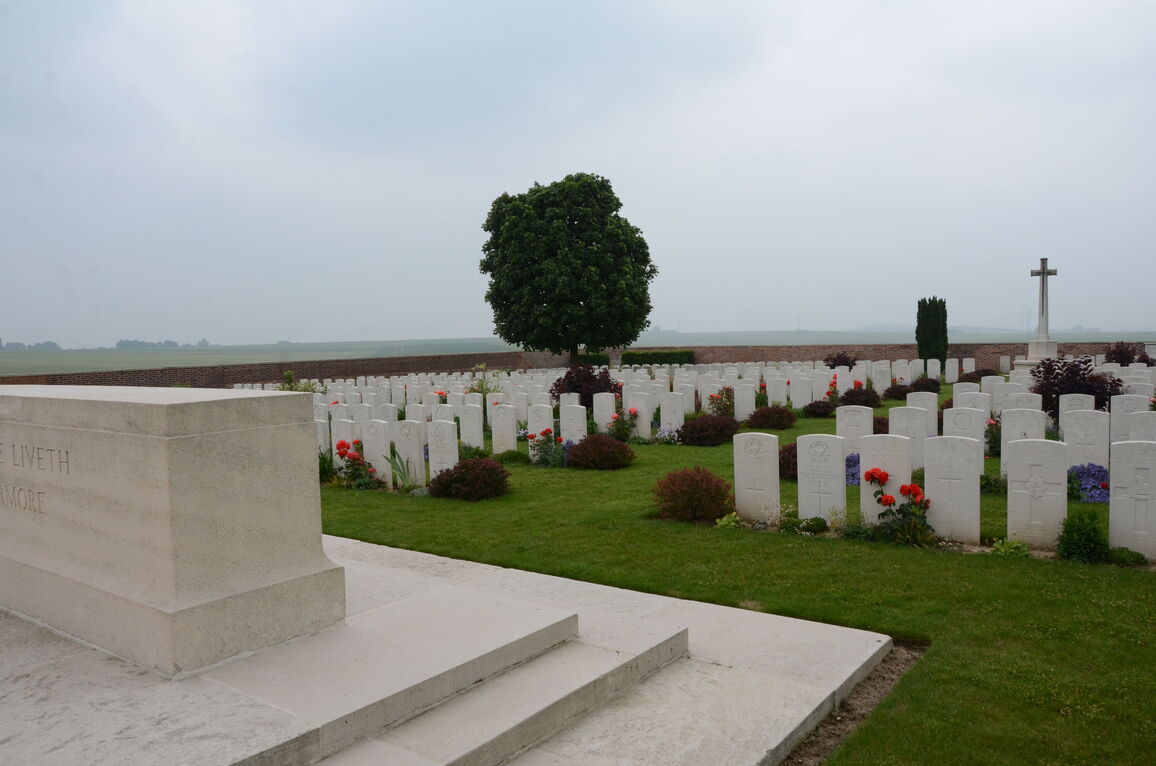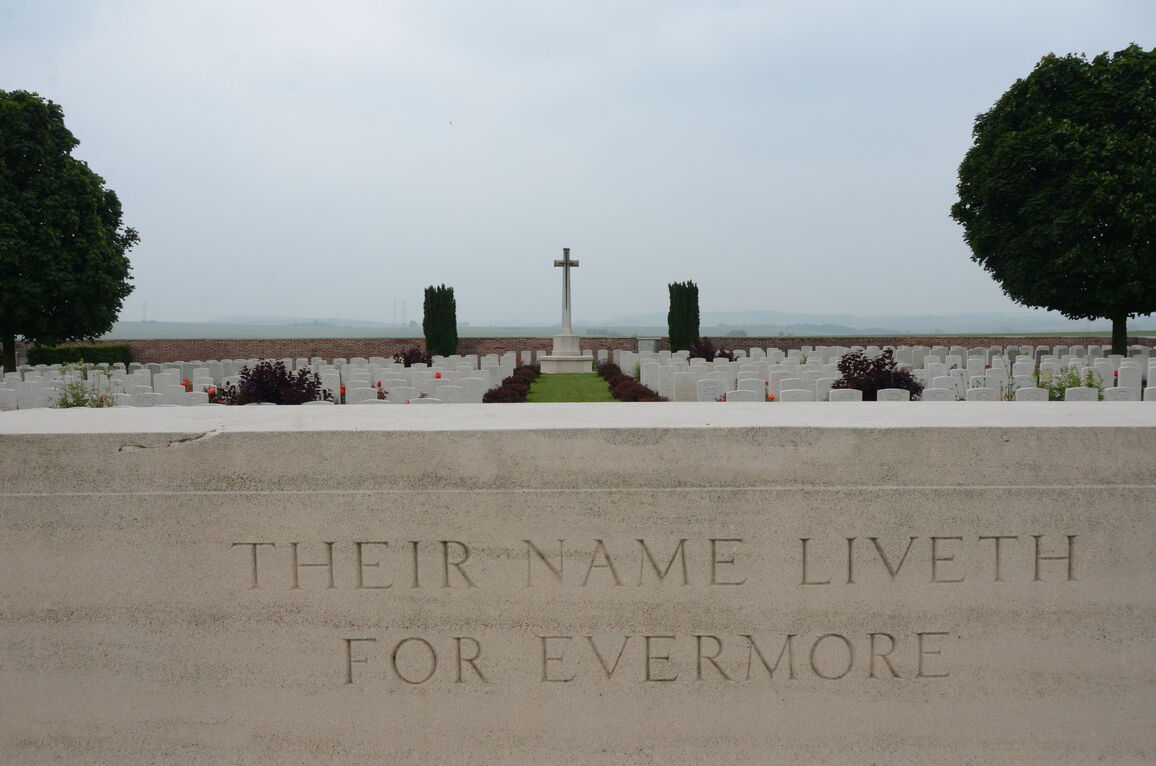Sailly-Saillisel British Cemetery
- Country France
- Total identified casualties 472 Find these casualties
- Region Somme
- Identified casualties from First World War
- GPS Coordinates Latitude: 50.01966, Longitude: 2.91007
Location information
Sailly-Saillisel British Cemetery is 16 kilometres east of Albert and 10 kilometres south of Bapaume.
Visiting information
ARRIVAL
The cemetery is signposted coming from both directions on the D1017. The cemetery is located between the villages of Sailly-Saillisel and Rancourt.
PARKING
There is a parking area at the front of the cemetery at the side of the main road along a flat and firm strip of grass. There is space alongside the road for several vehicles to the north of the cemetery. Care is to be taken when parking and exiting vehicles. The road is busy, and vehicles drive at speed along the road.
The parking area and road is on higher ground level than the cemetery. The is a grass path which zig-zags down the slope between the parking area and the main entrance. The grass verge alongside the road is approximately 2 metres higher than the ground in front of the cemetery boundary wall and drops steeply down from the roadside.
ACCESS LAYOUT AND MAIN ENTRANCE
Access to the main entrance from the road is via a zig-zag grass path from road level down a steep grass bank leading to the entrance.
At the main entrance there are stone steps from three sides which converge in front of 2 stone bollards in the middle of the gap in the wall at the entrance. Two steps lead down in front of the bollards down to paving.
There is no gate at the main entrance. There is a gap in the wall with 2 stone bollards. Openings between the bollards and side walls is 400 mm. Paving in front of the bollards is level with the paving inside the entrance in front of the Stone of Remembrance located immediately inside the cemetery.
There is a dirt strip, approximately 75 mm wide, between the edge of the paving and the grass inside the cemetery.
There are memorial shelters on either side of the main entrance. The Register Box is mounted into the back wall of the left shelter building viewed from inside the cemetery.
There are stone bench seating areas built into the internal walls along the front of the cemetery perimeter wall and inside both shelters at the main entrance.
The Cross of Sacrifice is in the centre of the cemetery at the back, close to the perimeter wall.
ALTERNATIVE ACCESS
On the right-hand side of the main entrance is the service entrance where there is a gap in the wall, approximately 2 metres wide. This entrance can be accessed directly from the grass ramp leading down from the road, offering step-free access into the cemetery.
The ground surface is grass, the area is flat and firm.
ADDITIONAL INFORMATION
The cemetery is permanently open.
History information
Sailly-Saillisel, standing at the north end of a ridge, was the objective of French attacks in September and October 1916, and was captured on 18 October. The village remained in Allied hands until 24 March 1918 when it was lost during the German advance, but was recaptured by the 18th and 38th (Welsh) Division on 1 September 1918.
The cemetery was made after the Armistice when graves were brought in isolated positions chiefly south and east of the village and from the following small burial grounds:-
ALDERSHOT MILITARY CEMETERY, Bouchavesnes, about 800 metres North of Bouchavesnes village. It contained the graves of 34 soldiers from the United Kingdom, belonging mainly to the 58th (London) Division which took Bouchavesnes on the 1st September 1918; but it had been used also in February and March 1917.
CHARING CROSS CEMETERY, Sailly-Saillisel, 800 metres to the South-West. It was made by fighting units in December 1916 -March 1917; and it contained the graves of 46 soldiers from the United Kingdom, of whom 34 belonged to the Foot Guards.
HEBULE MILITARY CEMETERY, Sailly-Saillisel, on the South side of the road to Morval, named from a quarry close by. It was made by fighting units in December 1916-1917; and it contained the graves of 30 soldiers from the United Kingdom, of whom 28 belonged to the Foot Guards.
MORVAL NEW CEMETERY, on the North side of the Morval-Sailly road just before it crossed a side road to Le Transloy and Combles. It contained the graves of 39 soldiers of the 38th (Welsh) Division who fell on the 31st August - 4th September 1918.
The cemetery now contains 771 burials and commemorations of the First World War. 300 of the burials are unidentified but there are special memorials to eight casualties known or believed to be buried among them.
The cemetery was designed by Sir Reginald Blomfield.


